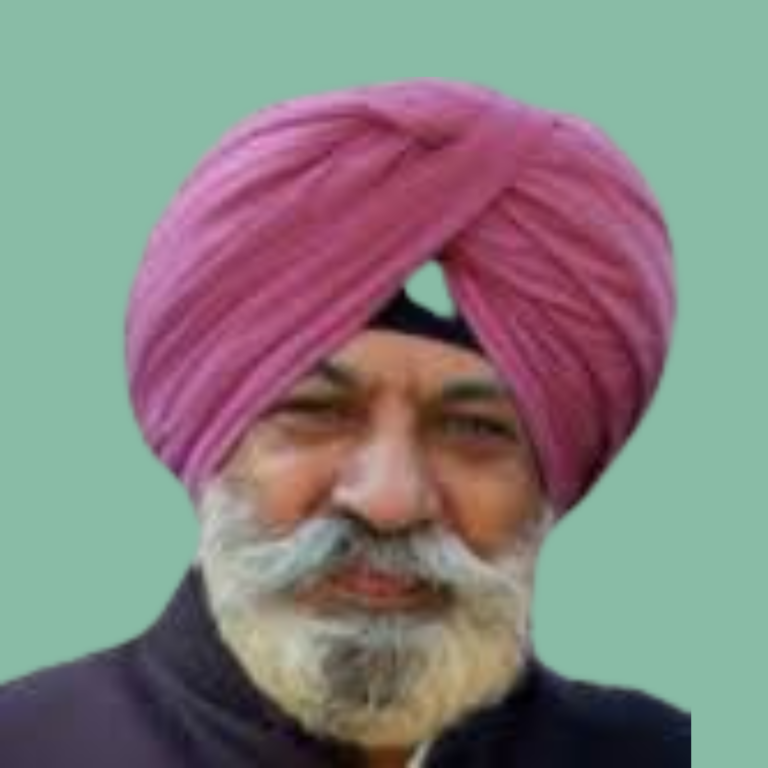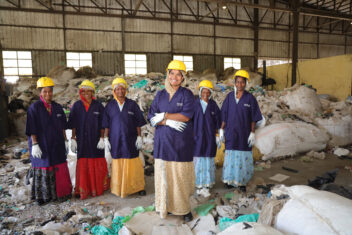Sustainability & partnerships: Kulwant Singh (3R WASTE) interview

Diving back in history
WASTE and its partners around the world have been changing the development game for nearly 4 decades. We have together developed sustainable and inclusive solutions to many challenges in the waste management and sanitation sectors. Approaching the organisation’s 40th anniversary, we wanted to revisit some key players from our history of collaborations to learn lessons on how we can maintain the spirit of our founders and early work as we move forward.
The following traces WASTE’s history through three continents and many decades, sharing the stories of 7 pivotal individuals who have contributed to this spirit through our work together. These individuals and organisations have continued to share our spirit of inclusivity in everything they do.
A few key takeaways
- Through our holistic approaches, WASTE and its partners around the world have been working on the underlying concepts of ‘circularity’ for decades. It is only recently that high level discussions have rebranded and called more attention to the importance of what is called today “circular economy”. Circularity is integrated in our approach.
- Working with the informal sector is difficult but a critical component to sustainable waste management systems. All our partners echo that this aspect of the work as pivotal to the inclusion and innovative nature of their work.
- Institutionalisation of key concepts and approaches in policy, whether on local or national scales, are crucial for ensuring sustainability of our work.
- Buy-in from the communities, especially local leaders, can either catalyse the success of or be the sole reason for failure of interventions. We must ensure our programmes and solutions are co-created with and by the communities we are trying to serve.
- Real change and local ownership take time to have sustained impact. Our projects, ambitions, and relationships with key stakeholders, shouldn’t forget this key consideration.
Gamechanger 5: Kulwant Singh
CEO (Chief Executive Officer), 3R WASTE Foundation
Haryana, India
“Things do succeed ultimately, despite challenges, where there is persistent effort and time.“
1. When did you start working in this field?
I have been working in the urban sector for nearly three decades. I was Executive Director of Human Settlement Management Institute New Delhi from 1992-03. Subsequently, I joined UN-Habitat in 2004 and continued until 2015 as a Regional Advisor for Asia and the Pacific with a focus on implementation of Millennium Development Goals (MDGs), particularly in the field of Water and Sanitation. 3R WASTE Foundation was established in late 1996, and our cooperation with WASTE Netherlands has been since beginning.
2. Can you describe the thematic focus of 3R WASTE Foundation and the kind of projects you are engaged with currently?
Our role has been largely a knowledge partner. As such, we have been focusing on capacity building, training programmes, and research and documentation. We started working in the field of sustainable waste management, and there was a lot of learning that we had from WASTE NL to start. we started learning the kind of model that WASTE has developed of working with different partners for the Integrated Solid Waste Management (ISWM) model. With this, we followed the route that WASTE laid down, which involved interacting with different local stakeholders such as the local governments, businesses, banks & financial institutions and communities, amongst others.
Another key area where we have been working is in plastic waste management, where WASTE NL colleagues have been majorly involved. There were a couple of initiatives that were taken up in India. One major initiative, in partnership with our sister organization called FINISH (Financial Inclusion Improves Sanitation & Health) Society, was where we partnered on a plastic waste management project in Udaipur, Rajasthan.
3. When and for what major projects have you partnered with WASTE?
Since we started with 3R WASTE Foundation, we always had a close relationship. One of our major partnerships was relating to a research project covering around 10 cities—5 from Africa, 1 from Nepal and 4 in India. As far as India was concerned, 3R WASTE played a key role in implementation. The focus of this project was to find ways we could somehow manage to create value from waste, including septic waste management.
The four cities we worked on together included Dungarpur (Rajasthan), Warangal (Telangana), Trichy (Tamil Nadu), and Pune (Maharashtra). This research project was very interesting, and we enjoyed working together. Of these four cities, Dungarpur was a small city, in Rajasthan. This city of Dungarpur had a small population of about 60-70 thousand people. The city did not have any sewerage facilities. The city municipality was managing the septic waste as well as the green and dry waste. The city did wonderful work in these areas. I would say that we helped improving the city in many ways. Over 2-3 years, the city improved managing its waste significantly. Dungarpur ultimately became a role model for the country. Specifically, because India has around 2,000 cities which were of the same size and had similar problems, so the model could be replicated.
In partnership with WASTE NL. we have also been working with other national and international organizations such as RDO Trust, USAID, UN-Habitat, and UN Centre of Regional Development in Japan.
4. How does scale play a role in the work 3R WASTE Foundation is doing?
Largely we have been working at the local level when it comes to waste management. We have been working with local governments and small players. Today, scalability is being facilitated with Corporate Social Responsibility (CSR) funding. Along with that, when you look at the current FINISH Mondial programme, today it is operating in different countries across the world, but it started on the local and micro-level in India (in 2009). So, scalability of the ISWM model and then the Diamond approach has been accelerated greatly from the work here and under FINISH Society.
5. Did the models require any fundamental changes later?
In India, waste is dealt with at a national level by various ministries and departments. At the national level, responsibilities are mostly related to policy-making and action plans. At the state level, the responsibilities are pretty similar, but implementation falls on the shoulders of the local governments. When it comes down to implementation at the city and rural community level, it comes down to just the local governments, and there is where the real challenges lie.
Often, local governments do not have enough manpower, strong institutional framework, and knowledge of technology. It is also a challenge to link all these levels of national, state and local frameworks. However, we have received a lot of support on the national level in the past years, and that has helped to really enable us to support many cities to do better in waste management. This has also pushed for a framework of handholding between the cities, leading to a city-to-city cooperation framework developing both intra and inter-state cooperation. WASTE has really been helpful in bridging the gap between the private sector and governments, along with the other players. While working with the ISWM model, we had to customize it to the local needs. The principles stay the same, but the application must be customized according to the local needs and context.
6. Can you tell us a little about aspects that didn’t work out on the ground? How did you overcome these hurdles?
We have met many challenges, specifically when it came to implementation. There is a significant role of the informal sector in waste management. Waste collection and segregation is done largely by the informal sector—those people who do not have any regular source of income. Problems come often with the use of technology. The application of technology becomes especially important, but often human resources are not available to operate that technology. Those are the kind of difficulties that we have faced while working in India. But things do succeed ultimately, where there is a persistent effort and time.
In one project, we felt that we could combine septic and waste management, but it just did not work. For example, we were working in the city of Pune, where we found that within the same municipality, there were two parallel departments to address. There was an engineering department dealing with sanitation and building the sewerage systems. Then there was a department dealing with waste management, both within the same municipality. These two departments were running parallel and were not even talking to each other. So, we thought of bringing them together on the same platform to coordinate, but it was not possible. In the end we had to leave it at that. Finally, we addressed both problems separately and tried other solutions. So, we had to customize many things and understand the ground realities that were quite different than we envisioned from the beginning.
7. What is your vision for the future?
The future is bright. As partners, we must work together to address these problems and issues in different countries. We will certainly need to make use of these processes and technologies that have been developed over the last years. Today we are not just talking of integrated solid waste management, but of circular economy. The circular economy principles must be really integrated into our overall approach. The processes must also accordingly be adjusted, and application of new technologies be brought in. In any case, waste management will remain a critical issue and we will be there as partners to address all new challenges.


